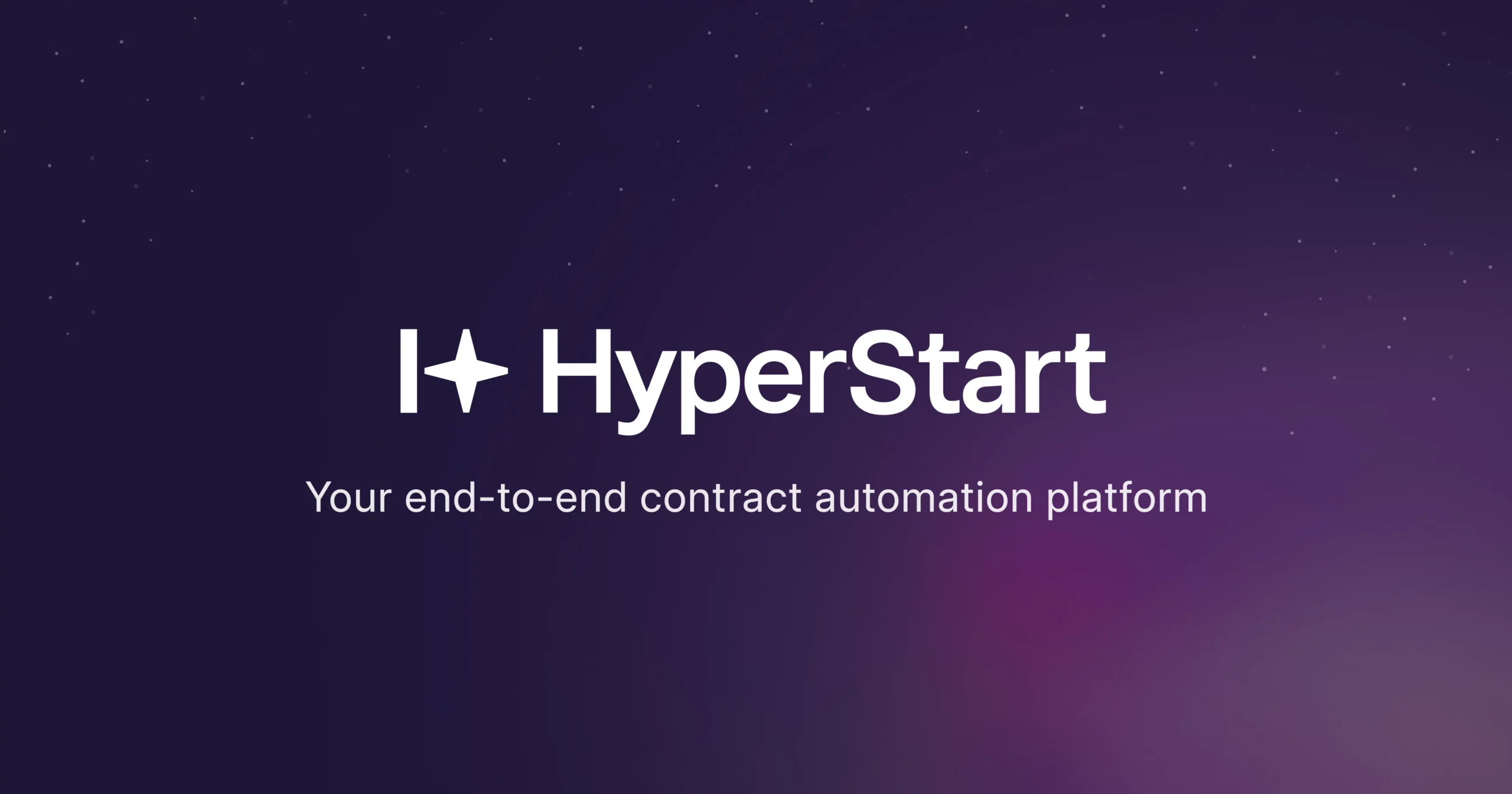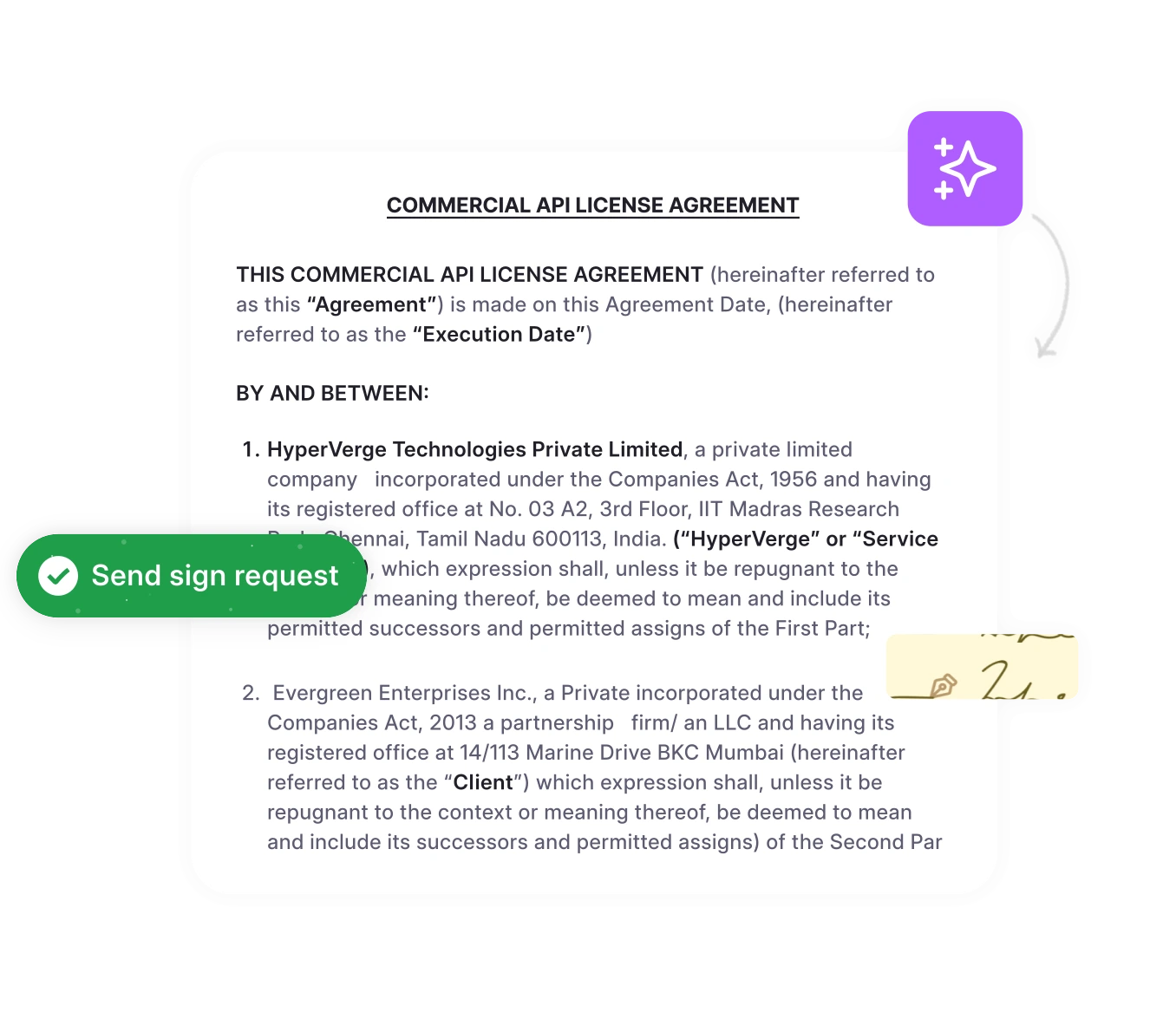Construction projects tend to stall for months, budgets spiral out of control, or teams locked in arguments over clauses.
Recent industry research reveals that cost overruns plague the construction industry, ranging from 12% to 70% in contract value. These overruns occur when a project’s actual expenses exceed its initial budget, often due to unexpected circumstances and poor contract management.
When you dig into most construction delays or unexpected costs, you’ll usually find a bigger issue underneath: poor construction contract management.But here’s the good news—managing contracts doesn’t have to be a headache. Whether you’re overseeing a multi-million dollar build or a neighborhood renovation, nailing contract management can make the difference between a smooth project and one that feels like a never-ending detour.
Here, we bring you a detailed blog on what construction contract management means, its key components, best practices, and how you can keep your projects on track with the help of a CLM platform.
What is construction contract management?
Construction contract management is the systematic administration of agreements throughout the project lifecycle. Each contract serves as the governing framework that defines scope boundaries, allocates risk, establishes payment mechanisms, and delineates performance obligations across all project stakeholders.
It is the rulebook that everyone agrees to before the first shovel hits the ground. The main goal is ensuring that all parties fulfill their obligations, payments happen on time, and surprises are kept to a minimum.
If you’re curious about minimizing contract risks, check out our step-by-step contract risk assessment checklist.
Who’s Involved?
- Contractors: Handle the actual build.
- Subcontractors: Specialists like electricians or plumbers are brought in for specific tasks.
- Project Owners: Usually, the client or organization funding the work.
- Consultants: Architects, engineers, or legal pros who make sure everything checks out.
Each group brings their own set of expectations, timelines, and requirements—getting everyone on the same page from day one is half the battle. For a closer look at how contract data migration can help keep all these parties on the same page, explore our in-depth migration guide.
Now that we’ve covered what construction contract management is, let’s look at its key components.
What are the key components of construction contracts?
Before you sign anything, it pays to know what’s inside the typical construction contract. These aren’t just legal documents—they set the ground rules for everything that follows.
Here’s what you’ll find in nearly every well-managed contract:
- Scope of work: Exactly what’s included (and what’s not).
- Project timeline: Start dates, deadlines, and project milestones.
- Payment terms: When and how payments happen (think payment schedules and triggers).
- Change order procedures: How changes are approved and documented.
- Risk allocation: Who’s on the hook if things go sideways?
- Dispute resolution clauses: What happens if there’s a disagreement?
- Retention clauses: How much money is held back until everything’s complete?
After knowing what a construction contract includes, it’s also important to understand the main types used in projects.
What are the main types of construction contracts?
There’s no one-size-fits-all in construction. Different projects call for different contract types and each comes with its own strengths and challenges.
Here is a detailed list of different types of construction contracts:
| Contract Type | Who Uses Them | Typical Use Case | What Makes Them Unique |
| Integrated Project Delivery | Owners, designers, contractors (collaborative) | Large, complex projects need teamwork from day one | All parties share risks and rewards; focus on early collaboration |
| Design-Build Contract | Owners, design-build firms | Fast-track projects, or where design/construction phases overlap | Single contract covers both design and build; speeds up timelines |
| Cost-Plus Contract | Owners needing flexibility | Projects with uncertain scope, early design stages | Owner pays actual costs plus a fee; high transparency, but costs can escalate |
| Time and Materials Contract | Owners, contractors | Small jobs, repairs, emergency work | Owner pays for hours worked/materials used; flexible but may lack a budget cap |
| Guaranteed Maximum Price | Owners, contractors | When owners want cost certainty, but with some flexibility | Contractor covers overages above the set max price; shares risk |
| Lump-Sum Contract | Owners, general contractors | Projects with a clearly defined scope and design | One fixed price for the entire project; simplest, but risky for scope changes |
| Unit Price Contract | Owners, contractors | Projects where quantities may vary (roads, utilities, infrastructure) | Payment per unit of work (e.g., per cubic yard); easier to manage adjustments |
| Incentive Construction Contract | Owners, contractors | Projects where early completion or cost savings are a priority | Rewards/penalties for meeting or missing targets; motivates performance |
Review construction contracts with precision
HyperStart flags risky clauses, vague obligations, and missing legal terms in your vendor or subcontractor agreements—before you sign.
Book a DemoUnderstanding the types of construction contracts is a good first step — next, let’s look at how a contract progresses through its lifecycle.
What is the lifecycle of a construction contract?
Construction contracts aren’t just paperwork—they’re living documents that follow your project from the very first bid to the final payment release. Missing a single stage can throw off project costs, timelines, and even legal obligations.
Here’s how the journey usually plays out:
1. Pre-award (bidding, drafting contracts)
Before anyone signs, there’s a lot to get right. This phase includes:
Project bidding: Contractors and subcontractors submit bids, owners review proposals, and the parties negotiate contract terms.
Drafting contracts: The contract manager ensures scope, risk allocation, and payment terms are clearly written, leaving no room for “gray areas.”
Stakeholder review: Legal teams, consultants, and sometimes financiers review everything—missing their input here can cause major contract amendments later.
Read contract risk management software for automated risk scoring and mitigation strategies.
2. Award and execution (signing and mobilization)
Now comes the “go” moment.
Signing & mobilization: Contracts get signed, teams are mobilized, and the site gets ready for action. This is also when payment schedules are set, insurance is checked, and regulatory requirements are reviewed.
Kickoff meetings: All parties involved (owners, contractors, consultants, project managers) get briefed, roles are defined, and communication plans are set. Strong kickoff meetings mean fewer surprises.
3. Post-award (performance monitoring, payments, change orders)
This is where most contract management challenges pop up—and where attention to detail pays off.
Performance monitoring: The contract manager ensures each milestone is tracked, payments flow on schedule, and the project scope doesn’t quietly expand.
Change orders: Projects rarely go exactly as planned. Material shortages, design tweaks, or client requests require official change orders. Clear procedures here prevent disputes and cost overruns.
Documentation: Every payment, approval, and amendment gets recorded. Skipping documentation leads to confusion, payment delays, and possible legal disputes.
Compliance checks: Project teams need to stay on top of legal requirements, safety regulations, and quality standards.
4. Close-out (final inspections, deliverables, retention release)
The finish line is more than a ribbon-cutting.
Final inspections: All work is reviewed, punch lists completed, and compliance confirmed.
Retention release: Retention clauses are reviewed, and final payments are made if all obligations are met.
Post-project review: Owners, contractors, and consultants analyze project success, document lessons learned, and wrap up outstanding issues.
Skipping close-out steps can leave money on the table and sour long-term relationships with stakeholders.
Having understood the lifecycle of a construction contract, let’s now turn to the common challenges encountered during its management.
What are the common challenges in managing construction contracts?
Managing construction contracts can be challenging due to the complexity of projects, involvement of multiple stakeholders, and constant changes. Here are 5 common challenges in managing construction contracts:
1. Miscommunication between stakeholders
A single misunderstood clause or missed email can set off a domino effect—unexpected change orders, cost overruns, or even claims. When project teams, subcontractors, and owners aren’t on the same page, delays and legal contract disputes are nearly inevitable.
Solution:
Use centralized communication tools and require written confirmation for all major decisions.
Companies risk $135 million for every $1 billion spent on a project, and new research indicates that $75 million of that $135 million (56 percent) is put at risk by ineffective communications, indicating a critical need for organizations to address communications deficiencies at the enterprise level.
2. Incomplete documentation
It’s not enough to have a signed contract. In construction, projects evolve—change orders, addenda, and site instructions pile up. Without document management, it’s easy to act on outdated terms, leading to disputes or duplicated work.
Solution:
Adopt a digital contract management system that tracks versions, provides audit trails, and keeps everything in one place.
3. Poor change management
Construction is notorious for scope creep and “we’ll fix it later” thinking. If contract amendments aren’t formally agreed and documented, costs quickly spiral.
Unapproved changes become flashpoints for conflict between owners, contractors, and subcontractors.
Solution:
Institute a non-negotiable process for submitting, reviewing, and approving change orders before any work proceeds.
4. Delays in approvals and payments
Bottlenecks can be brutal. If project stakeholders drag their feet on approvals, payments lag, and teams face cash flow crises. A delayed inspection or signature can shut down a job site.
Solution:
Use automated contract reminder software and workflow tools to escalate approvals or overdue tasks.
5. Legal disputes and risk management shortfalls
When risk isn’t clearly defined, everyone tries to shift blame once issues arise. Disagreements over liability, delays, or defects become legal disputes—often stretching for months and draining resources from the entire project team.
Solution:
Spell out risk allocation, dispute resolution, and quality standards in the contract. Review these with all parties before work begins.
Many of these challenges can be prevented by using a centralized CLM platform and building strong workflows into your contract processes.
Bring consistency to construction contract reviews
From owner-GC agreements to sub-vendor contracts, HyperStart standardizes reviews and reduces the risk of oversight.
Book a DemoAfter identifying the challenges construction contract managers face, let’s now consider the advantages that effective management brings to projects.
What are the benefits of effective construction contract management?
Getting contract management right is about more than avoiding headaches. It’s about driving better project outcomes, protecting profit margins, and creating lasting business relationships.
Here are the top 5 benefits of effective construction contract management as listed below:
1. Improve visibility across project milestones
With a proper system in place, contract managers and project leaders don’t have to wonder if a milestone was met or a payment was triggered. They see everything, change orders, payment schedules, compliance status, and contract amendments in one dashboard. This transparency allows faster decision-making and keeps the entire project team on the same page, reducing confusion and costly misunderstandings.
2. Ensure regulatory compliance
The construction industry faces a web of regulatory requirements—building codes, safety regulations, labor laws, and sometimes environmental standards. When you manage contracts effectively, it’s much easier to demonstrate compliance. That’s invaluable during audits, site inspections, or if an accident occurs.
3. Faster dispute resolution & fewer claims
Disputes and claims are inevitable in construction. But with organized, well-managed contract documentation, the resolution is smoother and less adversarial. Having a clear paper trail of change orders, approvals, and communication means disputes can often be solved internally—without jumping straight to legal action.
4. Stronger financial oversight & cost controls
Cost overruns are the bane of the construction industry. Effective contract management means every cost, from initial estimates to final invoices, is tracked against the contract terms. Project managers can quickly see where expenses are creeping up, ensuring the project stays within budget or at least, that there are no surprises when it doesn’t.
One of the most famous projects to experience a cost overrun was the Channel Tunnel project. Construction costs increased from £2600 million to £4650 million (80% higher than the forecasted costs).
In Korea, a study done by Seung Heon, Sungmin showed that the average final cost of seven megaprojects (defined as a project that costs more than $1 billion) at completion increased by 122.4% compared to the original budgeted cost.
5. Strengthen collaboration between teams
When everyone, including project managers, contract managers, subcontractors, and consultants, works from the same set of up-to-date contract documents, there’s far less room for confusion or blame-shifting. Each party knows exactly what is expected, by when, and how their work fits into the broader project picture.
After seeing the benefits effective contract management brings, it’s equally important to follow best practices to achieve these results consistently.
What are the best practices for construction contract management?
Effective construction contract management relies on best practices that improve efficiency, reduce risks, and ensure smooth project execution.
Here are the 5 best practices that help keep projects on time, within budget, and aligned with quality standards.
1. Define roles and responsibilities early
Don’t just assume everyone understands their duties. Define responsibilities at the project kickoff, share them in writing, and update as necessary throughout the project lifecycle. This avoids gaps where important tasks are overlooked and prevents finger-pointing if something goes wrong.
How it helps:
Clarity upfront means fewer disputes and more confidence across all parties involved.
2. Maintain a centralized system for all documents
Use a secure, cloud-based system for contracts, insurance certs, drawings, and correspondence. Make sure everyone, especially contract managers and project stakeholders, knows where to find the latest version.
Pro tip:
Set access controls so only authorized users can edit documents. Keep a clear audit trail for compliance and dispute resolution.
3. Review and update contracts regularly
Treat contract review as a routine, not a reaction. Schedule check-ins at key project milestones, or when big changes (like a scope shift or a regulation update) happen. Encourage all teams to flag ambiguities or risks early, so they can be fixed before work is impacted.
Why it matters:
Frequent reviews help catch issues when they’re still small—and much easier to resolve.
4. Track milestones and payment triggers
Use contract management software to map out every project milestone, payment schedule, and approval workflow. Set reminders and automatic escalations for overdue tasks.
Business benefit:
Timely payments keep subcontractors and suppliers motivated, while tracking approvals ensures no critical step is skipped.
5. Ensure every contract covers risk and compliance
Don’t treat risk and compliance as afterthoughts. Write clear terms about risk allocation, safety requirements, and regulatory compliance into every contract, and revisit them throughout the project. Use checklists and site audits to stay on top of compliance.
Practical step:
Incorporate insurance requirements and clear dispute resolution processes, so that everyone is prepared if things don’t go to plan.
Review construction contracts in a fraction of the time
HyperStart’s AI analyzes key clauses, flags risk exposures, and recommends redlines—so you never miss a legal gap in GC, subcontractor, or vendor agreements.
Book a DemoHaving covered the key best practices for effective construction contract management, it’s important to see how advanced solutions like HyperStart support teams in applying these principles efficiently.
Why do construction teams choose Hyperstart for contract management?
Construction projects move fast, and the paperwork piles up just as quickly. HyperStart’s contract management solution is designed to clear bottlenecks, cut manual work, and give construction firms more control over every project phase.
Here’s how it delivers where it matters most:
1. Automate construction contract drafting with templates and clauses
Drafting contracts from scratch every time can slow down even the most experienced teams. HyperStart lets you create contracts in minutes using industry-tested templates and pre-approved clauses. You can standardize language for everything from risk allocation to payment terms, helping project managers reduce errors and avoid costly disputes later on.
2. Speed up subcontractor and vendor approvals
Every construction project relies on a web of subcontractors, vendors, and suppliers. With HyperStart, contract managers can route documents for review and approval with a single click—no more chasing signatures or waiting for someone to check their email.
3. Integrate with construction tools, ERPs, and file systems
Contract management doesn’t exist in a vacuum. HyperStart connects seamlessly with popular construction management platforms, ERPs, scheduling tools, and digital file systems. That means project data flows smoothly, reducing duplicate entry, avoiding data silos, and making sure everyone is working with the latest information.
4. Track contract status, delays, and change orders in real time
One of the biggest frustrations for contract managers and project leaders is not knowing the status of a critical document or amendment. HyperStart’s dashboards offer a live view of every contract, whether it’s out for approval, waiting on a signature, or being amended after a change order.












